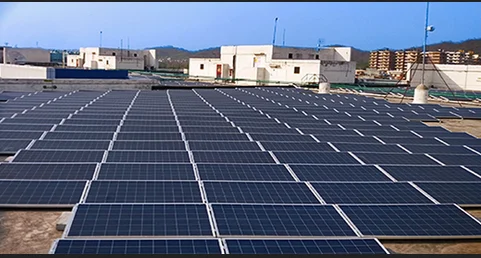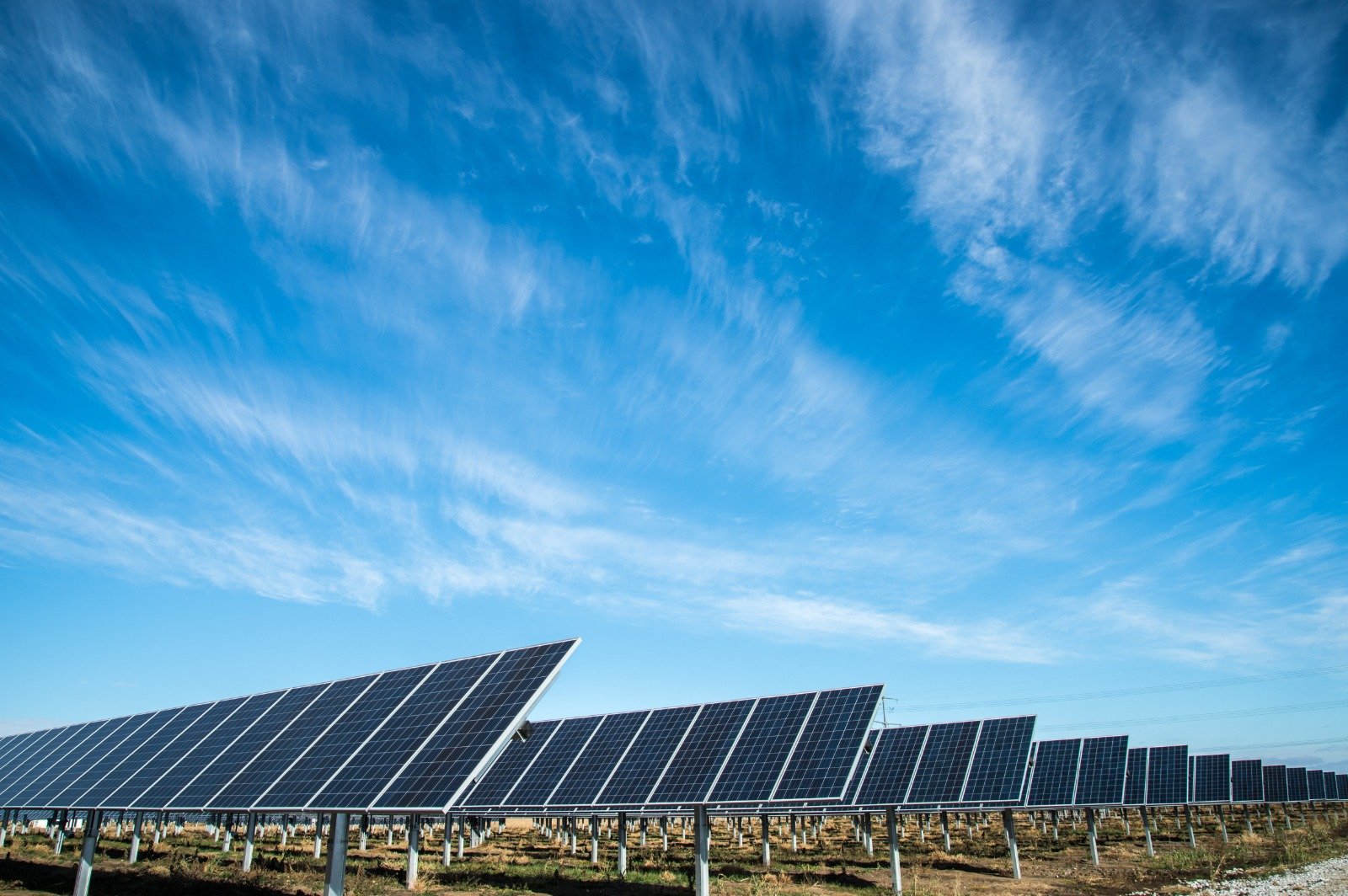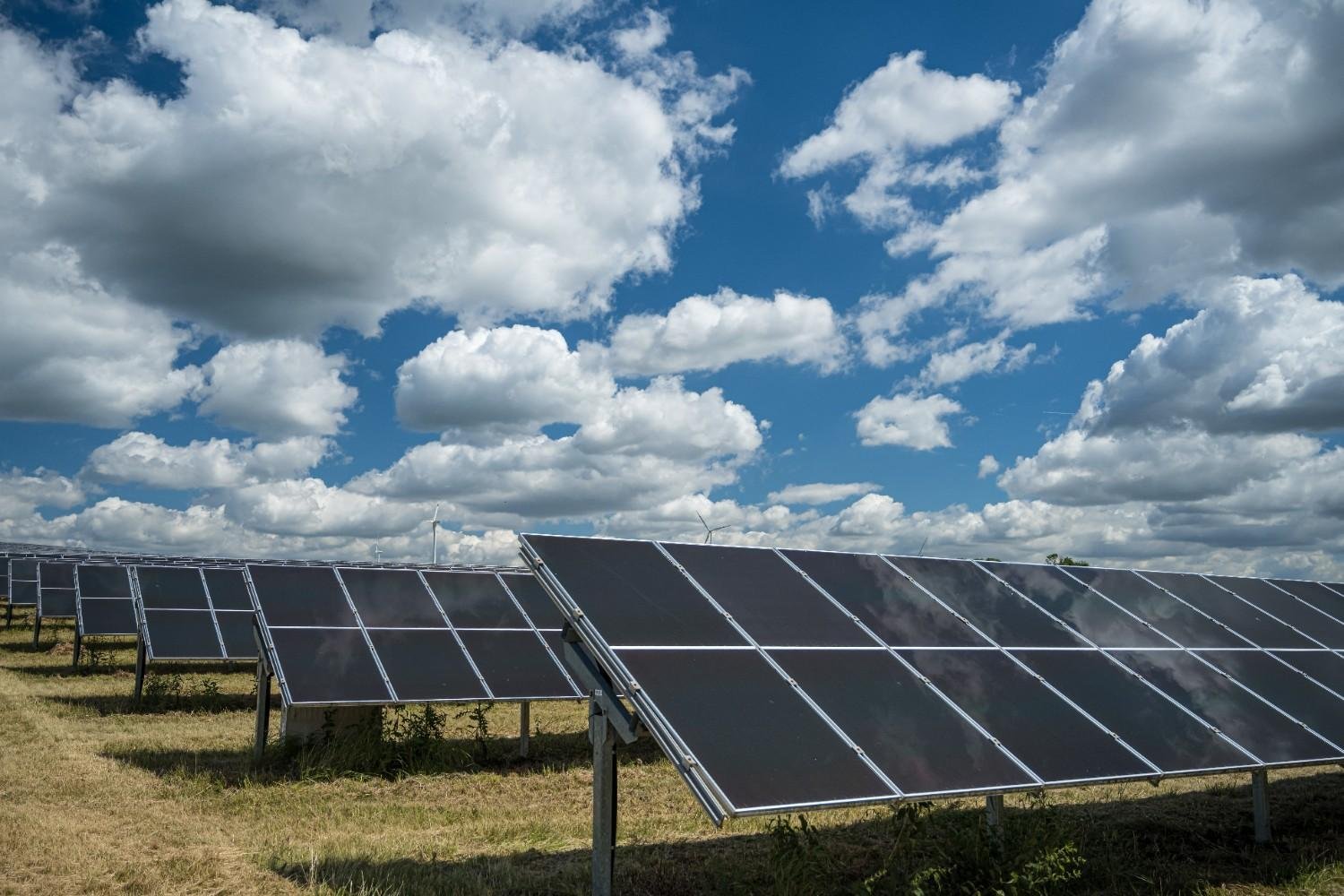In today’s rapidly evolving energy landscape, Environmental, Social, and Governance (ESG) factors have emerged as essential considerations for sustainable business practices. For solar power developers, investors, and operators, Environmental, Social, and Governance is not just a compliance measure but a strategic tool to drive growth, enhance reputation, and contribute to global sustainability. This comprehensive blog delves into how ESG principles are reshaping the solar energy sector, particularly in the context of solar plants.
Table of Contents
What is ESG in the Solar Industry?
ESG stands for Environmental, Social, and Governance—a set of non-financial criteria used to assess a company’s commitment to sustainability and ethical practices. In the solar industry, ESG principles play a vital role in ensuring that clean energy production is also responsible, inclusive, and well-governed.
Environmental
Solar power is a green energy source, but ESG encourages companies to ensure a sustainable lifecycle by reducing carbon emissions, promoting sustainable land use, minimizing water consumption, responsible recycling of end-of-life solar panels, and using eco-friendly materials. Agrivoltaics combines clean energy with crop growth, promoting biodiversity and land efficiency. Solar PV systems generate clean electricity with minimal greenhouse gas emissions during operation, with a 1-4% payback time. However, the highest environmental impacts come from material sourcing, manufacturing, and disposal, with only 10% of solar panels recycled.
Social
Solar projects should prioritize social responsibility, involving community engagement, education, and ethical labor practices. Key areas include creating local jobs, engaging communities, providing education, ensuring worker safety, and contributing to rural development through CSR initiatives. Solar parks in remote areas often provide large-scale employment and infrastructure improvements, strengthening local economies. ESG-minded developers engage communities early in planning to promote energy justice and equity, reducing conflicts and promoting inclusion.
Governance
Solar companies are adopting standardized ESG reporting frameworks like GRI, SASB, or TCFD to share environmental and social metrics transparently. Strong governance practices, such as anti-corruption policies, supplier audits, and independent ESG verification, help prevent greenwashing and build stakeholder trust. Firms with higher governance maturity typically score better in ESG ratings and investor assessments. Strong governance prepares companies for market shifts, reputational risks, and investor scrutiny.
Environmental Impact of Solar Plants
Solar energy is widely recognized as one of the most environmentally friendly sources of electricity. However, while it dramatically reduces carbon emissions compared to fossil fuels, solar plants do have environmental footprints that must be responsibly managed. Let’s explore the key aspects of their environmental impact:
1. Carbon Emissions Reduction
- Solar plants significantly reduce greenhouse gas emissions by generating electricity without burning fossil fuels. They can offset over 1,500-1,600 tonnes of CO₂ annually and have a lower carbon footprint than coal, oil, or natural gas. The energy payback time for solar panels is typically 1 to 4 years, with clean energy production lasting 25-30 years. However, extraction and purification of materials like silicon, silver, aluminum, copper, and rare earth elements can cause habitat disruption, soil erosion, and water contamination.
2. Land Use and Biodiversity
- Utility-scale solar farms require significant land, potentially altering drainage patterns, compacting soil, increasing erosion, and threatening local biodiversity. In the U.S., conversion of fertile farmland to solar use raises concerns about long-term agricultural productivity. Large-scale solar installations, particularly ground-mounted ones, can disrupt habitats and require responsible siting. Using native grasses and pollinator-friendly plants can enhance biodiversity. Integrating Environmental Impact Assessments and biodiversity mapping during planning ensures minimal ecological disruption.
3. Water Conservation
- Solar PV systems consume minimal water during operation, unlike traditional thermal power plants. They do not require cooling water, making them suitable for panel cleaning in dusty regions. Dry-cleaning technologies and robotic systems are gaining popularity, and waterless options like electrostatic or air-blow cleaners are reducing water usage in desert or drought-prone areas. Water conservation is crucial, especially in arid regions like Rajasthan or the Middle East. Concentrated solar power plants consume 600-650 gallons per MWh, with dry cooling reducing this to 90%. Floating solar installations can alter water temperature and oxygen levels, impacting aquatic ecosystems.
4. Waste Management
- Solar panels, which last 25-30 years, are becoming a significant waste issue globally, with over 30,000 tonnes of waste in 2021 and projections of over 10 million tonnes by 2050. In the U.S., 90% of decommissioned panels end up in landfills, and recycling infrastructure is inadequate. The European Union mandates recycling, while countries like India and Japan are implementing similar policies. The current recycling rate is less than 10%, mainly due to inadequate infrastructure. To ensure future sustainability, building solar panel recycling facilities and integrating circular economy practices is crucial.

Social Impact of Solar Plants
Solar projects influence local communities in multiple ways. From job creation to educational initiatives, social responsibility plays a key role in Environmental, Social, and Governance.
1. Job Creation
- Solar projects create numerous employment opportunities, including manufacturing, installation, maintenance, and R&D roles, boosting local economies and strengthening livelihoods. They stimulate local economies, reduce rural-to-urban migration, and support skill development in electrical, civil, and mechanical trades. India is projected to generate 1.6 million new jobs through solar by 2030.
2. Affordable Energy & Reduced Household Costs
- Solar energy can lower electricity bills, benefiting low-income households and enabling them to allocate savings towards health and education. Solar microgrids and rooftop solutions provide power to off-grid communities, and solar lighting significantly increases children’s study hours.
3. Health and Safety
- Solar energy replaces traditional sources like kerosene lamps, diesel gensets, and wood-burning stoves, reducing respiratory illness rates, indoor air pollution, burn injuries, and safer travel in rural areas with solar street lighting, supporting education and safer homes.
4. Empowerment of Women & Marginalized Communities
- Solar initiatives, such as Barefoot College’s “Solar Mamas,” are empowering rural women in India and Africa by providing new economic roles and leadership opportunities. These programs train women in solar engineering, transforming energy access, gender roles, and community leadership. The program has empowered thousands of women worldwide, transforming their lives.
Governance Impact of Solar Plants
In the renewable energy revolution, governance is the backbone of trust. As solar energy companies scale across geographies and portfolios, robust corporate governance ensures ethical operations, investor confidence, and sustainable business growth.
1. Land Acquisition & Local Rights Management: Poor governance in land is crucial for solar projects, as it can lead to forced displacement, legal challenges, social unrest, and reputational damage. The case of Tata Power’s 100 MW solar plant in Maharashtra, India, highlights the need for transparent, inclusive land governance.
2. Ethical Supply Chain & Anti-Corruption Practices: Solar companies globally source components, ensuring fair procurement processes, traceable and ethical vendor selection, and adhering to international compliance norms, thus avoiding ESG scandals and building trust with global clients.
3. Community Ownership & Participatory Governance: Inclusive governance in community solar models ensures shared ownership, equal voting rights in plant management, and long-term support. For example, in Sweden, community-owned solar parks like Nöbble and Törneby operate democratically, promoting energy justice and accountability.
4. Board Oversight & ESG Integration: Solar companies with strong ESG-aligned boards align strategy with sustainability goals, enable smarter decisions, and encourage ethical leadership, leading to superior long-term value and stakeholder confidence.
5. Financial Transparency & Reporting: Investors and regulators demand full ESG visibility, requiring independent audits, GRI or TCFD-aligned sustainability reports, carbon footprint disclosures, and risk mitigation frameworks, enhancing investor confidence and enabling green bond financing.

ESG Reporting and Metrics for Solar Plants
The document outlines various environmental, social, governance, and reporting metrics for solar companies. Environmental metrics include tracking GHG emissions, energy generation, waste generation, health and safety incidents, local employment rates, CSR initiatives, diversity and inclusion, employee satisfaction, and workforce retention. Governance metrics involve disclosing board composition, executive compensation, anti-corruption practices, whistleblower protection systems, and evaluating reports through third-party audits. ESG reporting frameworks for solar include GRI, ASB, TCFD, EU CSRD, and ISO 14064.
Global ESG Standards for the Solar Sector
1. Universal ESG Reporting Frameworks
The Global Reporting Initiative (GRI), Sustainability Accounting Standards Board (SASB), Task Force on Climate-related Financial Disclosures (TCFD), and International Sustainability Standards Board (ISSB) are widely used sustainability reporting standards.
2. Target Setting Standards
Science Based Targets Initiative (SBTi): Enables companies to set verified emissions reduction targets aligned with the Paris Agreement.
3. Regional EU Regulation
The EU’s Corporate Sustainability Reporting Directive mandates ESG reporting across companies, while the EU Taxonomy Regulation classifies economic activities as environmentally sustainable, crucial for solar financing.
4. Standards Tailored to Solar PV: Solar Stewardship Initiative (SSI) ESG Standard
A solar-specific supply chain assurance framework assessing governance, environmental impact, and labour rights at manufacturing sites.
5. Financier & Investment Frameworks
Equator Principles and Principles for Responsible Investment are global benchmarks for assessing social and environmental risk in project financing, with over $128 trillion in institutional assets under management.

Benefits of ESG for Solar Plant
1. Enhanced Environmental Performance
- Solar energy generates electricity without emissions, improving air quality and combating climate change. It’s resource-efficient, uses minimal water, and can accelerate carbon reduction by up to 3,000 tons annually.
2. Stronger Governance & Financial Viability
- Solar PV offers rapid returns, data-driven governance, and credible ESG performance, attracting green financing and reducing energy bills within 3-5 years.
3. Elevated Brand Reputation & Market Position
- ESG integration in solar operations boosts stakeholder trust, attracts investors, particularly young ones, and enhances talent retention by fostering motivation, loyalty, and productivity.
4. Operational Resilience & Innovation
- ESG frameworks promote energy efficiency, waste reduction, and operational efficiency, while strong governance helps anticipate regulatory changes, prevent conflicts, and improve project timelines.
5. Social Benefits and Local Impact
- Solar plants generate local economic benefits through manufacturing, installation, and maintenance, while fostering community engagement through education, training programs, and shared ownership.
Challenges in ESG Implementation for Solar Plants
As the solar industry accelerates globally, integrating Environmental, Social, and Governance (ESG) principles has become essential—not just for compliance, but for long-term sustainability, investor trust, and stakeholder value. However, putting ESG into action comes with significant challenges across all three pillars.
1. Environmental Challenges
- Solar energy faces challenges in ESG execution, including end-of-life panel disposal, manufacturing emissions and toxic byproducts, land use conflicts, and water usage in cleaning. Proper recycling systems are lacking in most countries, posing risks of hazardous waste. Large-scale solar farms also compete with agriculture and forest land, affecting local ecosystems and biodiversity.
2. Social Challenges
- Solar projects involve not only technology but also people and communities. Common social challenges include labor rights violations, inadequate stakeholder engagement, lack of equitable benefits, and inadequate health and safety standards. Unethical labor practices, poor consultation with local communities, and inadequate training for solar workers can lead to project delays and resistance.
3. Governance Challenges
- Companies often struggle with strong ESG governance, leading to greenwashing, weak data systems, limited board involvement, and a lack of standardized metrics. These issues can damage credibility, hinder effective measurement and communication of ESG impact, and make it difficult to benchmark performance globally due to varied criteria used by different rating agencies.
4. Regulatory & Operational Hurdles
- ESG goals in solar operations often face logistical, legal, and infrastructure challenges. Fragmented policies, slow permitting processes, and lack of infrastructure in regions hinder cross-border solar operations, causing delays in ROI and scaling.
5. Financial & Investment Constraints
- Mid-sized solar companies face challenges in aligning ESG with profitability due to high initial costs, limited access to ESG capital, market oversupply, and increased investor scrutiny. Responsible sourcing, community programs, and compliance efforts increase upfront investment, while market oversupply drives down prices and requires detailed disclosures.

Future of ESG in Solar Energy
The future of Environmental, Social, and Governance (ESG) in the solar energy sector is shifting from a compliance requirement to a strategic imperative. ESG-focused investments are rebounding as clean energy proves profitable and sustainable, with green funds showing strong returns in 2025. The term “resilience” is increasingly replacing ESG, reflecting a stronger focus on climate risk adaptation and long-term system durability.
Technology is playing a pivotal role in this transformation, with artificial intelligence, smart sensors, and real-time analytics enabling solar companies to track ESG metrics more precisely, optimize performance, and reduce greenwashing risks. Standardized ESG reporting is helping to streamline disclosures and attract global investors. ESG expectations now extend beyond environmental performance, requiring companies to innovate in risk mitigation and impact measurement. Access to ESG-driven financing remains a challenge in emerging markets, with less than 15% of global clean energy investment flowing to developing countries outside China.
Conclusion
The solar industry is at the forefront of innovation and accountability, with ESG emerging as a blueprint for long-term success. Companies that embrace ESG are building resilient brands, inclusive communities, and a cleaner future. Integrating ESG at the core of their strategy is crucial for the future of solar. Soleos Energy, with over 450 MW+ in its portfolio across India, Europe, and Africa, focuses on delivering measurable environmental, social, and governance value across every solar project. They believe in aligning clean energy infrastructure with global ESG standards and aiming to build solar plants that power profits and purpose.
